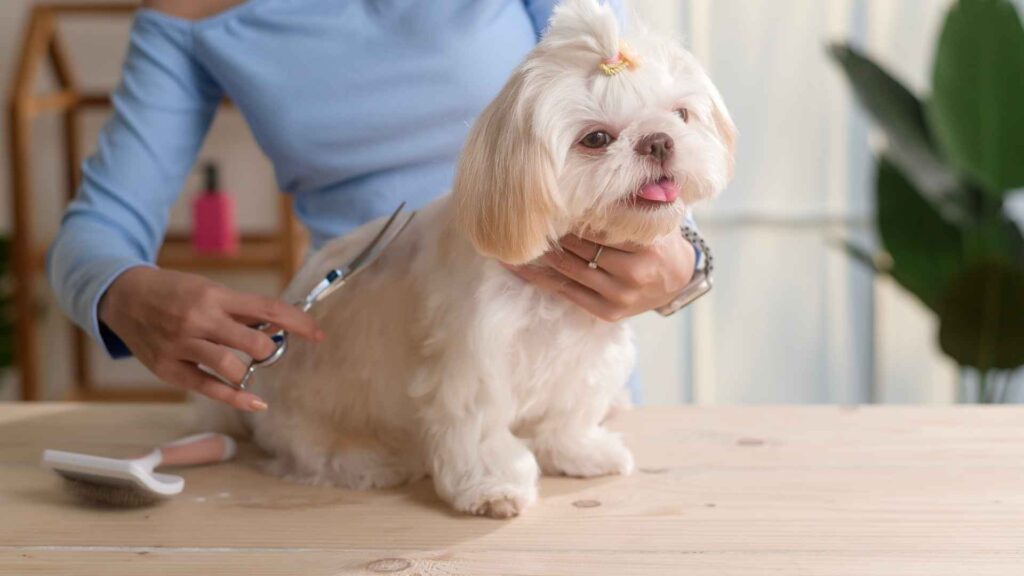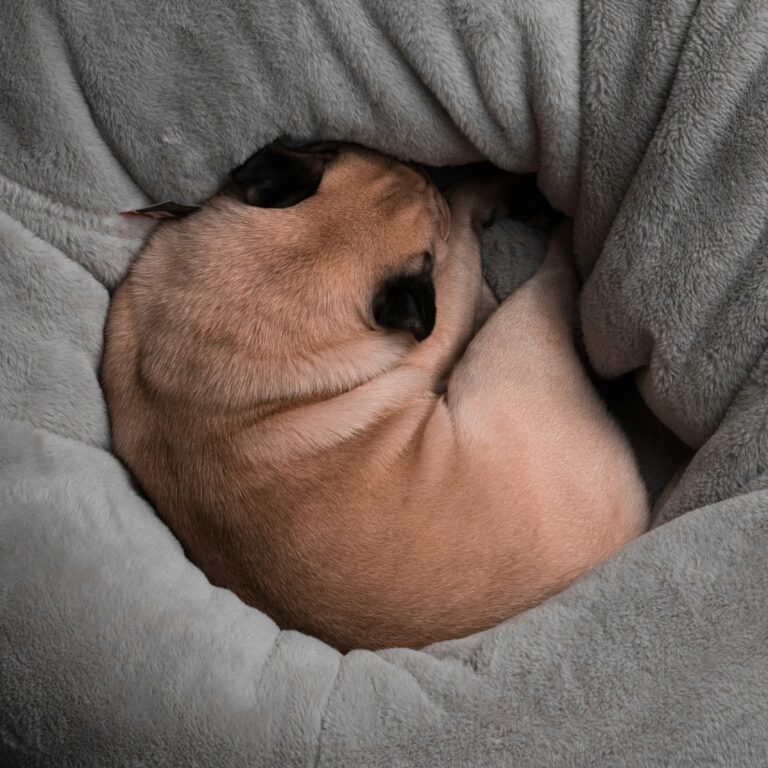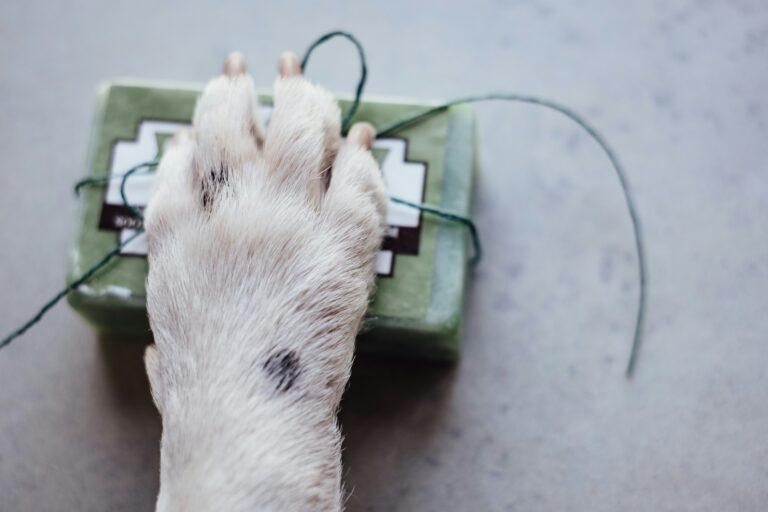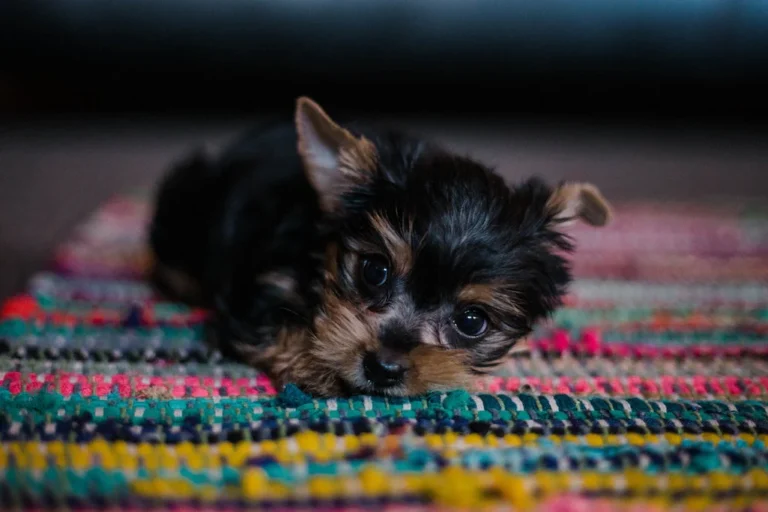Transforming your small dog from “fluff to fabulous” is not an impossible task, and it all starts with the right grooming tools. Understanding the intricacies of your canine’s coat, and picking the most suitable brush can spell the difference between a lackluster and a lustrous coat. In this detailed guide, we aim to empower you with the knowledge to bring out the best in your small dog’s coat.

Navigating the vast world of grooming products can be overwhelming. Hence, we have meticulously curated a list of the best brushes for small dog breeds. This guide will delve into the unique characteristics of different brushes, their benefits, and how they cater to diverse coat types. From slicker brushes to bristle brushes, we got you covered.
Stay with us as we explore the power of grooming in enhancing your small dog’s style. In the process, we will debunk some common misconceptions, provide expert tips, and guide you in making informed decisions. With the right brush and proper grooming techniques, your dog’s coat can go from “fluff to fabulous” in no time! 🐾🐾
The Role of Grooming in Skin Health
Beyond appearance, grooming plays a vital role in maintaining your small dog’s skin health. Brushing removes dead skin cells and loose hairs, which helps reduce shedding and prevents mats from forming. When mats are left untreated, they can pull tightly at the skin, causing discomfort and even infections. Regular brushing also allows you to spot skin issues early, such as redness, flakiness, parasites, or unusual lumps.
By brushing your small dog frequently, especially those with high-maintenance coats, you promote circulation and stimulate the skin’s natural oil production. These oils are crucial for maintaining the skin barrier and keeping the coat shiny and soft. Dogs that don’t receive routine brushing may develop dry, irritated skin or dull fur, contributing to poor overall health.
Understanding Coat Types in Small Breeds
Different small dog breeds have a wide variety of coat types, each with its own grooming needs. Understanding your dog’s coat is the first step in selecting the right grooming tools and establishing an appropriate routine.
Single-Coated Dogs: Breeds like the Maltese or Yorkshire Terrier have a single layer of hair. These coats tend to grow continuously and require frequent trims and brushing to prevent tangles.
Double-Coated Dogs: Pomeranians and Shih Tzus have both an undercoat and a topcoat. This dual-layer structure is designed for insulation but can easily become matted without routine brushing and deshedding.
Curly-Coated Dogs: Breeds like the Bichon Frise have dense, curly hair that mats quickly and needs specialized care. A consistent grooming regimen is essential to avoid discomfort and skin issues.
Wire-Coated Dogs: Terriers often have coarse, wiry coats that can benefit from hand-stripping or trimming with a stripping knife to maintain texture and health.
Grooming Tools Every Small Dog Owner Should Have
To keep your small dog looking and feeling their best, assembling a reliable grooming toolkit is essential. Beyond the types of brushes already mentioned, several other tools can greatly improve your grooming routine.
Detangling Comb: These combs have both wide and narrow teeth, useful for gently working through knots and tangles, especially in areas prone to matting such as behind the ears and under the legs.
Dematting Tool: For stubborn mats, a dematting tool can be used carefully to cut through snarled fur without pulling on the skin. These tools should be used with caution to prevent skin irritation.
Shedding Blade: Though more common for larger dogs, some small breeds benefit from a shedding blade, especially during seasonal coat changes. This tool can help remove dead undercoat efficiently.
Trimming Scissors and Clippers: Small grooming scissors with rounded tips are ideal for trimming around sensitive areas such as the face, paws, and sanitary regions. For full-body trims, electric clippers with adjustable blades are useful for keeping coats manageable.
Grooming Glove: For dogs that are sensitive to brushes or new to grooming, a grooming glove can be a gentle way to remove loose hairs while petting.
Styptic Powder: When trimming nails, accidental nicks can happen. Having styptic powder on hand quickly stops bleeding and prevents infection.
Bathing Your Small Dog the Right Way
Brushing and grooming are only part of the equation—bathing is equally important for keeping your small dog’s coat and skin healthy. However, bathing too often can strip away natural oils and cause dryness, so it’s important to find a balance based on your dog’s coat type and lifestyle.
Frequency: Most small dogs benefit from a bath every 3–4 weeks. Dogs with oily coats or those that spend a lot of time outside may need more frequent baths.
Shampoo Selection: Choose a dog-specific shampoo formulated for sensitive skin or specific coat types. Avoid using human shampoos, which can disrupt a dog’s pH balance and lead to irritation.
Conditioners: For dogs with long or dry coats, a leave-in conditioner or coat spray can help with detangling and maintaining softness. Always ensure that products are pet-safe and free from harsh chemicals.
Drying: After bathing, towel-dry your dog gently and, if tolerated, use a pet-safe blow dryer on a low heat setting to thoroughly dry their coat. Never let a thick or curly coat air dry completely, as it can lead to tangles or mildew odor.
Nail Care and Ear Cleaning
In addition to coat care, maintaining your small dog’s nails and ears is essential to their overall health.
Nail Trimming: Small dogs that live indoors may not wear down their nails naturally. Overgrown nails can alter gait and lead to joint problems. Aim to trim your dog’s nails every 2–4 weeks using a small nail clipper or grinder.
Ear Maintenance: Dogs with floppy ears or hair inside the ear canal (such as Poodles or Shih Tzus) are prone to infections. Use a vet-recommended ear cleaning solution and cotton pads to gently clean the ears every couple of weeks. Never insert cotton swabs into the ear canal.
Seasonal Grooming Considerations
Different seasons bring unique challenges when it comes to grooming.
Spring and Summer: Dogs shed their winter coats in spring, making regular brushing critical to manage loose fur. During hot months, some owners choose to trim down long coats to help dogs stay cool—but be cautious not to shave down to the skin, which can remove natural sun protection.
Fall and Winter: As the weather cools, some breeds grow a thicker coat. Increase brushing frequency to prevent mats and check for debris caught in the fur. Moisturizing sprays can help combat dry winter skin.
Rainy and muddy conditions in these seasons also mean you should clean paws more frequently and check between toes for signs of irritation or trapped moisture.
Building a Positive Grooming Routine
Grooming should be a positive experience for both you and your dog. Starting early, going slow, and making it enjoyable can set the stage for a lifetime of stress-free care.
Start Young: Introduce grooming when your dog is a puppy. Even short sessions with brushing and touching sensitive areas like paws and ears can help them become accustomed to the routine.
Create a Routine: Groom at the same time and place to build predictability. Use calming music or soft voices to set a relaxed tone.
Reward Good Behavior: Offer treats, toys, or play after grooming sessions to reinforce positive associations. If your dog shows anxiety, stop the session and try again later.
Break It Up: For long grooming sessions, especially for high-maintenance breeds, consider breaking tasks into smaller chunks. Brush in the morning, bathe in the afternoon, and trim nails the next day.
When to Seek Professional Help
While many grooming tasks can be done at home, some situations call for professional assistance.
Matting Beyond Home Care: Severely matted coats can hide skin infections and should be handled by a groomer to avoid injuring the dog.
Special Coat Styles: Breeds that are shown or kept in traditional cuts, such as Schnauzers or Poodles, often require groomers skilled in breed-specific styles.
Behavioral Challenges: Dogs that are fearful or aggressive during grooming may benefit from working with a certified professional or behaviorist who specializes in fear-free grooming techniques.
Medical Conditions: If your dog has allergies, skin sensitivities, or parasites, your vet may recommend specific products or grooming frequencies.
Maintaining Your Dog’s Coat Health
Proper grooming is not just about making your small dog look fabulous. It also contributes significantly to their overall health. Regular brushing helps to stimulate blood flow, which can enhance coat health. Additionally, it allows you to check for any abnormalities such as lumps, ticks, or skin irritations.

Diet and Coat Health
Just as diet affects human hair, it also impacts a dog’s coat. Foods rich in omega-3 fatty acids, like fish and flaxseed, can promote a shiny, healthy coat. Additionally, ensure your dog’s diet includes enough protein, as it’s a critical component for hair growth.
Grooming and Bonding Time
Grooming also provides an opportunity to bond with your dog. Most dogs enjoy being brushed, and this activity can help to strengthen your relationship. Make grooming a positive experience by giving your dog treats and praise during and after brushing.
The Best Brushes for Small Dogs
Choosing the right brush largely depends on your dog’s coat type. However, here are a few top-rated brushes that are favored by dog owners and professional groomers alike.
- FURminator deShedding Tool: This brush is perfect for dogs with undercoats. It reaches through the topcoat to remove loose undercoat hair and reduce shedding.
- Hartz Groomer’s Best Combo Brush: This double-sided brush works well for all coat types. One side has stainless steel tips with a protective coating to remove loose hair and detangle, and the other side has soft bristles to smooth the hair and distribute natural oils.
- Chris Christensen – Long Pin Slicker Brush: This is a premium brush designed specifically for long-haired dogs. It’s great for removing tangles and loose hair without causing any discomfort.
Final Thoughts
Grooming your small dog doesn’t have to be a chore. Understanding their specific needs and investing in the right tools can make the process much more efficient and enjoyable. Remember, grooming is not only about maintaining your dog’s appearance but also about keeping them healthy and happy.
Whether your small dog has a thick undercoat or long, silky hair, there’s a perfect brush out there for them. Invest in quality grooming tools and enjoy the process of making your little friend look fabulous!
Conclusion
Beyond the aesthetic benefits, grooming also plays a pivotal role in early detection of health concerns. During regular brushing sessions, you’re in a prime position to spot abnormalities such as lumps, skin irritation, parasites, or excessive shedding. These early warnings can be crucial in addressing health issues before they escalate into more serious problems. This makes grooming more than just a beauty routine—it becomes a proactive part of your small dog’s healthcare.
Moreover, the emotional bond that forms during grooming cannot be understated. Taking the time to brush your dog regularly builds trust and affection, especially for anxious or shy pets. It becomes a calming ritual, allowing your dog to relax and feel secure in your presence. For small breeds that tend to be closely attached to their owners, these moments of gentle care reinforce your relationship and help them feel cherished.
It’s also worth noting that regular brushing can reduce the amount of fur and dander left around your home, which is particularly helpful for apartment dwellers or those with allergies. A well-groomed coat doesn’t just look better—it sheds less, smells cleaner, and contributes to a more pleasant living environment for everyone in your household.
When selecting grooming tools, be mindful not only of brush type but also of build quality. A poorly made brush may have rough edges or cheap bristles that irritate your dog’s skin. Investing in trusted, high-quality brands ensures a safer and more enjoyable grooming experience for both of you. Comfort, durability, and functionality should all factor into your choice.
Finally, remember that grooming is an evolving practice. As your small dog ages, their coat may change in texture or thickness, requiring adjustments to your routine or tools. Stay observant and flexible, tailoring your grooming methods to suit your dog’s changing needs. Whether you’re preparing your pooch for a show, a stroll through the park, or simply snuggles on the couch, a clean and well-brushed coat enhances both their appearance and their comfort.
With the knowledge and tools shared in Fluff to Fabulous, you’re now well-equipped to elevate your grooming game. Keep those brushes handy, your treats nearby, and your heart open. Your dog’s happiness, health, and fabulous fluff are now in your hands. 🐾🛁🧼



